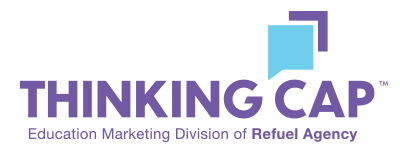Getting qualified student leads is the ultimate goal for every higher education marketing team. But prospective students have high standards for their dream education, and a lot of options to choose from. Driving qualified leads is much easier said than done.
As we finish out a whirlwind year, it’s more important than ever to ensure that your student recruitment team’s energy and efforts are directed towards getting results. So as you’re planning for 2021, we’re sharing these four strategies to boost your higher education lead generation efforts and succeed in the year ahead.
1. Research Your Future Students

At Thinking Cap Agency, we believe that research is the foundation of everything we do — and for a reason. The face of today’s prospective graduate, undergraduate, transfer, and professional certificate students is changing every day, and in order to effectively influence them, you need to understand them.
The goal of researching your future students is to create a specific student persona — a representation of your ideal future student — complete with the information you need to effectively influence them down the road. Student personas help you focus your time on qualified student inquiries, guide your messaging and campaigns, and align your work across your higher education institution. The result? You’ll be able to attract high-value prospective student visitors, leads, and students to your institution.
So how do you develop student personas? Student personas can be created through research, surveys, and interviews.
- Look through your contact database to understand how people people find and engage with your content
- Use form fields that capture important persona data on your website
- Interview current or past students to understand how they found your school and what engaged them the most
- Determine your persona’s basic demographic information: How old are they? What is their income? Do they skew male or female? Where do they live? Are they married, and do they have kids?
- Get clear about your persona’s lifestyle: How do they spend their time? What are they interested in? What do they do in their spare time? How do they engage with various types of media, and how often?
- Understand your student persona’s motivations: Why are they looking to pursue higher education? What are their goals? What motivated them to start looking and applying? What is their timeline for enrollment?
Quality research defines the foundation of your marketing strategy. Every audience uses the same channels, but how they use them and how they fit into an enrollment journey is different.
Read next: 5 Things Your Prospective Students Won’t Tell You
2. Identify Your Future Students

Now that you’re armed with your ideal student’s persona, the next step is for colleges and universities to identify that group of ideal students in the real world.
This is where access to audience databases is really key — and it’s why Thinking Cap excels at generating quality student inquiries. Thinking Cap has invested in cutting-edge education marketing data science tools and expertise that applies your student persona attributes to anonymized Personally Identifiable Information with the TC Student Data Center. We have access to 97+ million mobile device IDs, 175 million email identities, 82 million postal addresses, 100s of 3rd party data sources, extensive platform data, and university data integrations.
All that to say? You can easily skip the step of identifying your future students, because Thinking Cap Agency already knows who they are. We have them in our database already.
3. Influence Your Future Students

Once you’ve matched your student persona to real-life prospective students, you can launch your enrollment marketing campaigns with the aim of reaching, engaging, and influencing your future students.
Your ideal prospective students are looking for your school between six months and two years in advance — it’s your job to ensure that your messages are reaching them across the media channels where they spend the most of their time and are most effectively influenced.
So how do you reach, connect with, and influence your prospective students to generate student leads?
Analyze your current recruitment pipeline
Are there areas of friction? What’s working — and what’s not working?
Optimize your website
Your website is the face of your institution, and it’s often the first introduction your future students get with your school.
Read next: 5 SEO for Higher Education Tips to Boost Your Traffic
Change up your content mix
Your content marketing is the driver of your lead generation strategy. The content on your website, social media, and email marketing answers prospective students’ questions, convinces them your school meets their requirements, piques their interest, provides valuable resources, and helps your future students understand how they would fit it at your school.
Take inventory of your current content assets, and explore gaps in both content and content format. For example, short-form video storytelling is a highly engaging and effective method for influencing prospective students.
Utilize targeted media strategies
Because you are armed with research about your future students, you understand what media media strategies best influence your target demographic.
Targeted media strategies include:
- Email inbox marketing
- Student social profile matching
- Cross-device display persona targeting
- Student device ID targeting
- U-SOCIAL™ short-form video storytelling
- Video/connected TV
- IP Student Household Targeting
- Content Creation and Distribution
- Landing Page Development and Hosting
- Search Engine Marketing (SEM)
- Streaming Audio
- Postal Delivery
Read next: Little-Known Graduate School Recruitment Strategies for 2020
4. Analyze Your Campaign Performance

The last step to ensuring that your ongoing campaign is effective is to analyze your results to make sure that your strategies are working.
Manually tracking your campaign performance is often time-consuming and challenging — that’s why we created QUAD™. QUAD™, or Quantitative University Analytics Dashboard, synthesizes all components of your omnichannel marketing campaigns into one dashboard for real-time campaign tracking, attribution, testing, and optimization.
In today’s competitive higher education marketplace, you need the most effective higher education lead generation strategies to attract qualified students and meet your enrollment goals each year — especially in the crucial enrollment year of 2021.
Ready to increase your qualified student leads? Contact us today to get started.




